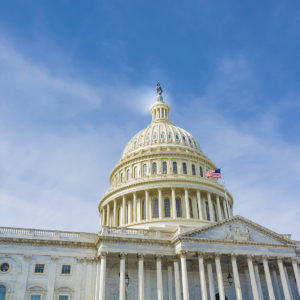In Washington, there is bipartisan enthusiasm over a new law designed to spur medical innovation. The 21st-Century Cures Act takes aim at serious problems in American healthcare, sets many admirable goals, and lays out strategies for medical research.
The law has admirable features, but it also generates reasons to temper optimism over what it will produce. No doubt, it will encourage some innovators, but in doing so, will it discourage others? Might it actually decelerate some vital areas of innovation?
Here, we look briefly at some of the law’s key provisions and at reasons for a wait-and-see attitude.
In a politically fractured city, the Cures Act’s bipartisan support was unusual. During the postelection lame-duck session, the House voted 392-26 in favor of the legislation; the Senate voted 94-5. President Obama signed the law December 13.
The law allots $4.8 billion to three efforts:
—The President’s Precision Medicine Initiative aims to develop digital and genomic technologies to transform the prevention, diagnosis and treatment of disease.
—The Vice President’s Cancer Moonshot Initiative seeks cures for the whole array of cancers.
—The President’s BRAIN Initiative hopes to unlock secrets of the human brain and combat illnesses like Alzheimer’s disease.
In addition, the law seeks to: combat the opioid epidemic; modernize the Food and Drug Administration procedures for approving new drugs and medical devices; and encourage the use of Electronic Health Records.
But does the law go too far in centralizing and micromanaging innovation? Think of how information technology (telecommunications and computing) catapulted in recent decades. The internet’s original architecture emerged from the Department of Defense, but hundreds of thousands of applications came from unknown individuals in unexpected places — like Apple’s and Google’s founders working in garages.
It was fierce private market competition and government’s relative absence from those markets that allowed world-changing technologies to proliferate.
Had the federal government anointed and heavily funded a favored search engine in the early 1990s (or put the Postal Service in charge of the effort), would that have prevented the rise of Google? If the Precision Medicine Initiative tips the scale toward particular technologies, will that favoritism prevent the emergence of other, superior, technologies?
Encouragingly, the law includes some funding through the Eureka Prizes — retrospective awards in which the government rewards winners after the fact, rather than trying to pick winners beforehand.
The Cancer Moonshot Initiative, modeled after the Apollo Moon Landing project, carries much emotional weight. (Its founding steward was Vice President Joe Biden, who lost his older son Beau to cancer.) But Tom Stossel and I suggested that the Obama administration’s own approach to space exploration — competing private launch and payload developers — is a far better model for cancer research than Apollo’s monopolistic, centrally planned approach.
The Cures Act strongly recognizes that the FDA impedes the pace of drug and medical device development. The law expedites and clarifies the approval processes (and whether approval is even needed for certain technologies). In 2015, Richard Williams, Adam Thierer and I wrote of the FDA’s excessively risk-averse incentives, arguing that the FDA might be “unfixable” — unable in its present form to shed its anti-innovation bias. Do Cures Act reforms mark the beginning or the end of loosening the regulatory framework?
The law recognizes that Electronic Health Records will be central to managing and improving health and care in this century. The law focuses on “interoperability” — the internet-like ability to share dissimilar data across computer and software systems. Encouragingly, the law speaks of “voluntary” standards.
Dr. Darcy Nikol Bryan and I recently outlined principles to make future EHRs (which we call Digital Health Biographies) dynamic and competitive in the way IT has been. We believe a key element is for the government to abstain from picking winners in the EHR space — to allow markets voluntarily to choose, improve and discard technologies.
The success or failure of the Cures Act will depend heavily on how it is implemented. Will the law’s administrators attempt to guide each minute step of the innovation process? Or will they adopt the hands-off approach that allowed the internet to flourish?
Time will tell.

